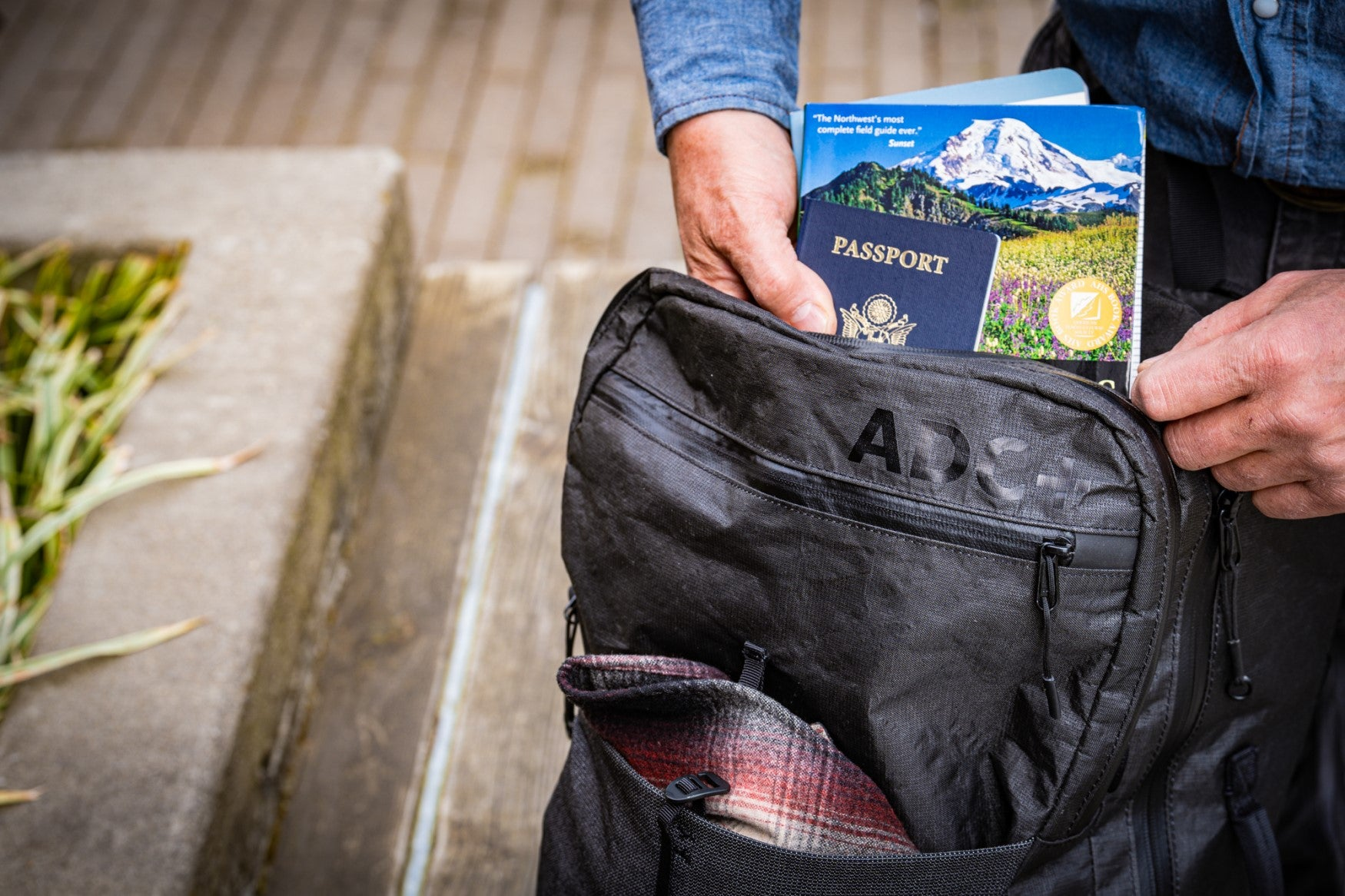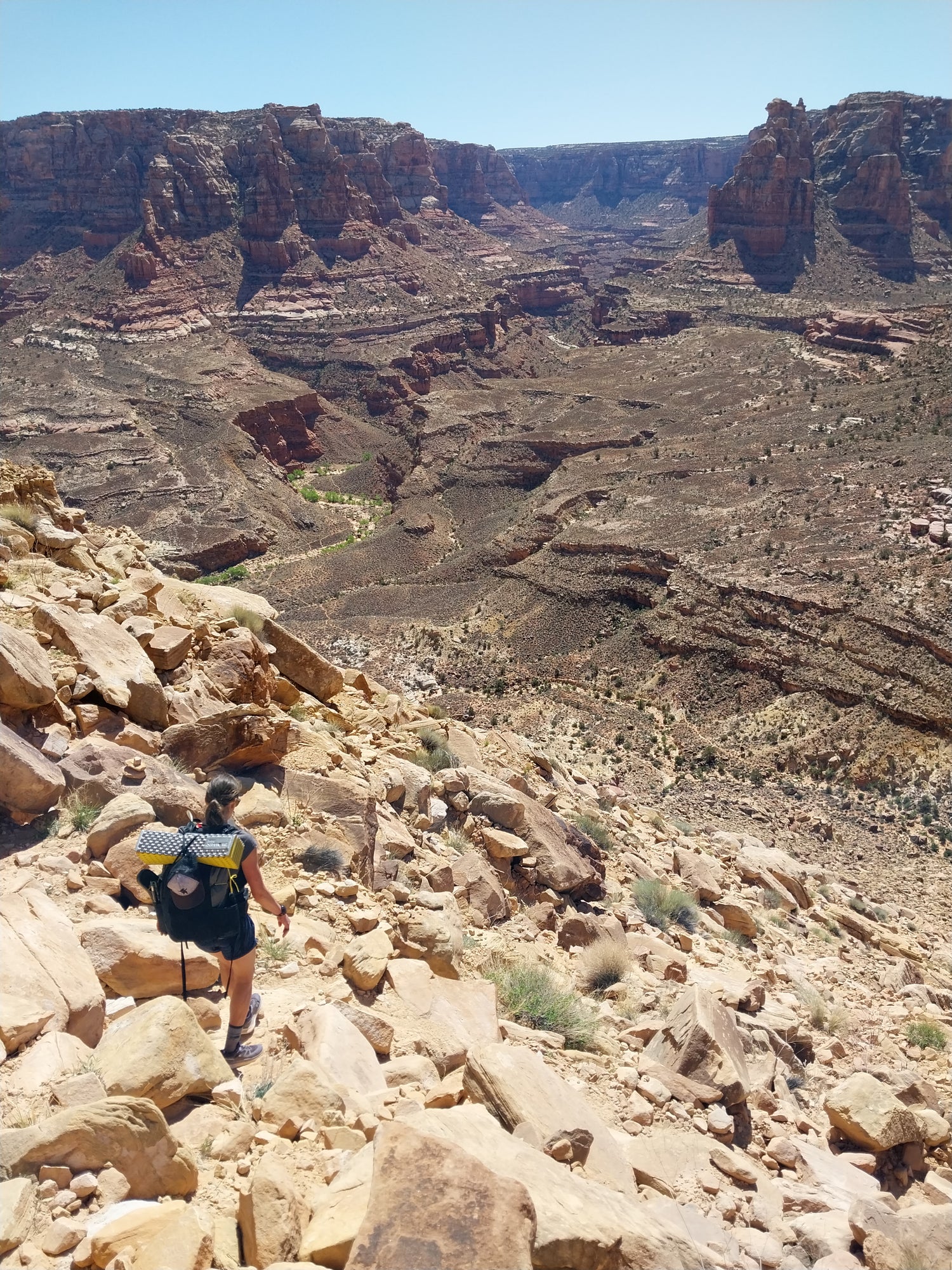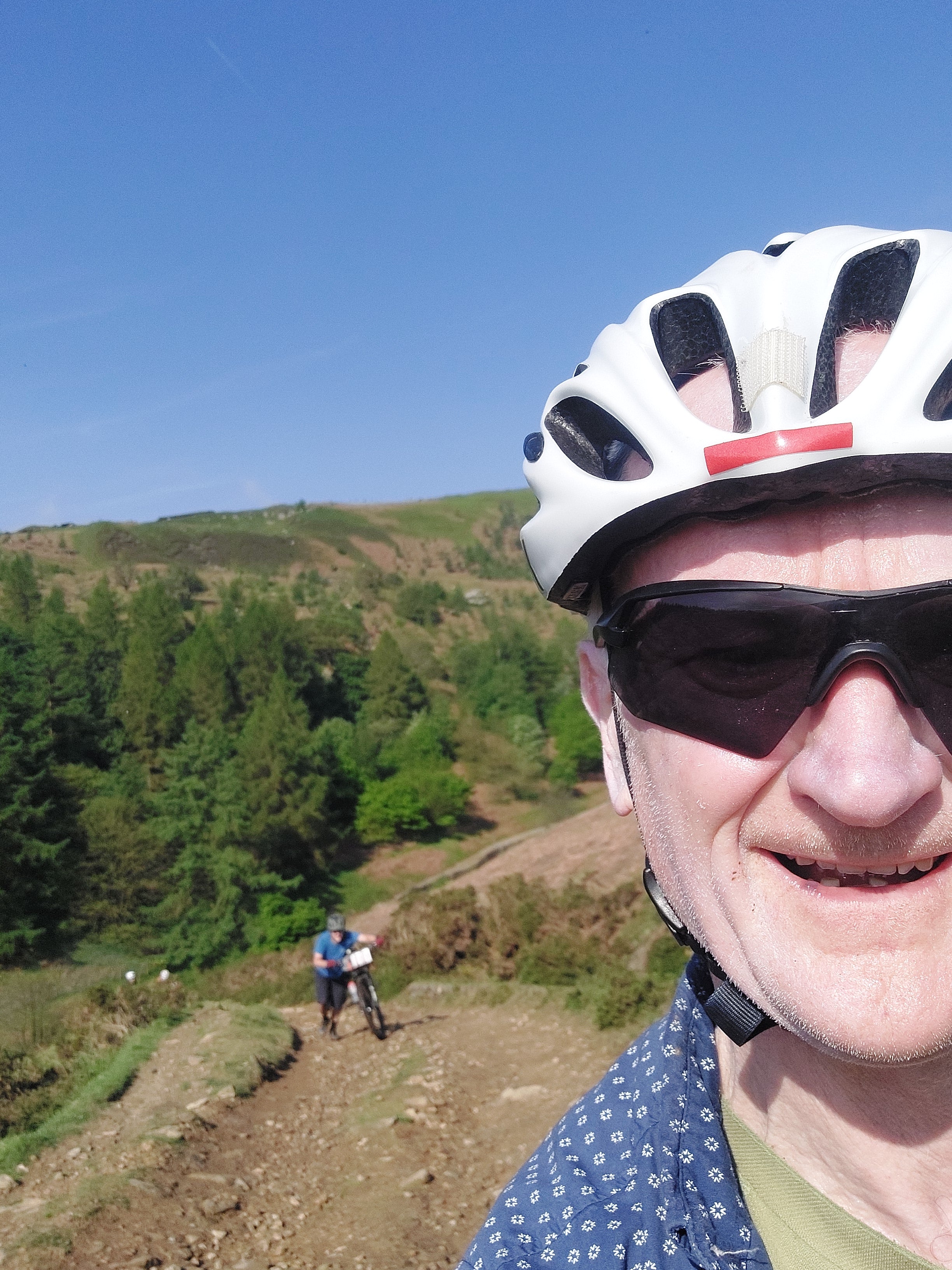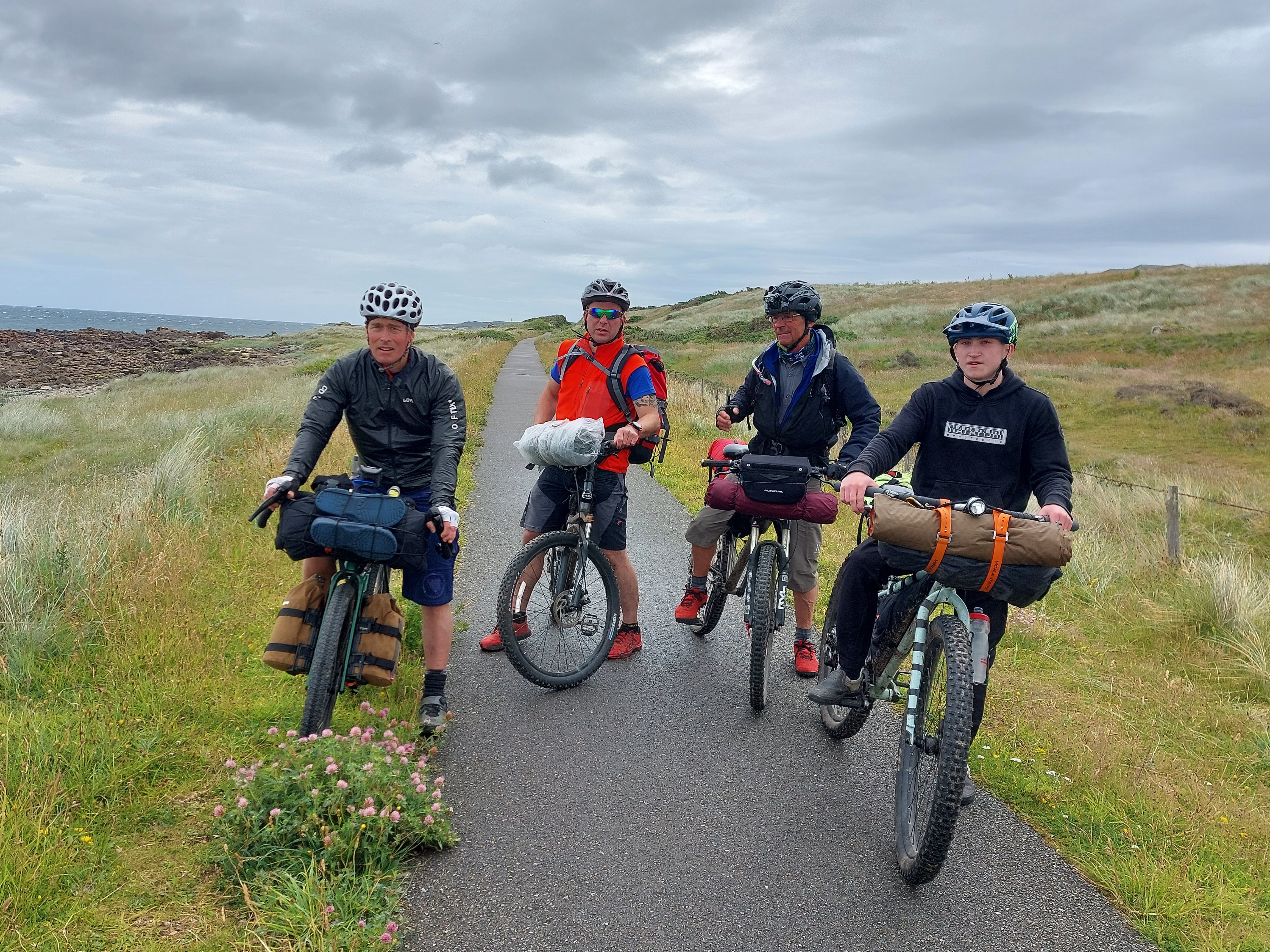Over the past several years, as I’ve begun tackling longer backpacking trips or longer trails in shorter time periods, I have been asked lots of questions about how I do it. My first answer is typically, “I just take another step.” That’s really the simplest way to sum it up. Tired? Take another step. Hungry? Shove some trail mix in your mouth and take another step. Lonely? Ain’t nobody else right here so you might as well take another step.
The longer version of the answer starts with a question back, “Is this something you would like to do?” There is no reason to backpack faster and longer unless you really want to! Fastpacking isn’t for everyone and that is 100% ok. In a world of strava segments and FKTs, it’s easy to get caught up in the hype. If you think you want to go faster and longer because that is what the internet says everyone is doing, shut off your phone and go take a long (or short) slow walk in the woods. If while on your walk, you think something like this, “I wonder if I could do the Colorado Trail in 3 weeks,” or “It sure would be interesting to see if I could do that 2 week backpack in 1,” keep walking and ask yourself why. If it is truly for a journey of self exploration, then read on.
The path to backpacking faster and longer (we’ll get to the “more enjoyable”) consists of several steps. Perhaps you are detecting a theme here.

Step 1: Lighten Your Load.
There are plenty of resources out there, and right here on Six Moons designs blog, about how to lighten your load, but I’ll share a few tips that worked for me. I’m not sure who first coined the phrase, “You carry your fears on your back,” but some version of that is all over the ultralight interwebs. The idea is that we tend to pack in anticipation of what we see as the worst thing that could happen. For me, this used to be the fear of getting cold. I would pack too many warm layers, which I rarely ever used. Guess what? Clothes are heavy. Over the years, I learned that most of the time, all I really need is one long sleeve shirt, a fleece, a rain jacket, and a light puffy. Waterproof pants are also warm pants. I also learned that one can wear the same pair of shorts and t-shirt for 10 days straight. This ain’t no fashion show, but choose your own adventure on underwear. I’m not going to share those secrets here. Order yourself an ultralight backpack and shelter from Six Moons Designs and you’ll never look back. I used to be uncomfortable with the idea of sleeping on the ground with only a tarp, but then I got the Gatewood Cape and my life and the weight of my backpack was never the same. I’m still working on choosing lighter foods, but going for calorie density is the best choice. I am trying to give up my trail habit of tortillas with peanut butter, but I may just have to suck up the weight penalty for that one. Speaking of weight penalties, while I am a huge proponent of lightweight gear and less clothing, I also believe in the “comfort item.” This is an item you carry that has no other purpose except for enjoyment. My comfort item is my Kindle. Since I tend to backpack alone a lot, the thought of crawling in my tent and disappearing into a story propels me through long days on the trail. Plus, I don’t get that many opportunities to read for pleasure! Pro tip- no murder mysteries or anything by Gillian Flynn. I know from experience. The one thing that you cannot buy a lighter version of is water. Water is heavy, but it also keeps us alive. I recommend keeping that in your pack. You’ll see different iterations of how backpackers choose to carry their water. Find the system that works best for you and encourages you to drink regularly. Being dehydrated can really slow you down and make hiking much less enjoyable.
Now, that we have dropped weight from our backs, onward.
Step 2: Figure out your problem areas and address them.
What normally holds you back or keeps you from pushing forward? Is it blisters? Dehydration? Difficulty eating at altitude? Maybe a niggly Achilles tendon?
Figure out what makes you most uncomfortable while hiking and address it early. I used to get terrible searing blisters on my feet. In my early days, I’d just push through it until the blister was so bad that I was mixing ibuprofen in with my trail mix. One day, when I felt the familiar rub, I stopped, took out my first aid kit, and applied a blister pad and some leukotape (highly recommended) before it turned into a monster. Guess what? The blister didn’t get worse and my trip was much more enjoyable. Seems obvious, but when you are trying to hike longer and faster, it is easy to try to ignore your needs in the interest of forward movement. Don’t do that. Stop and stretch your calves on a rock and you may find that the Achilles doesn’t flare so much. If you tend to get dehydrated or have low blood sugar, set an alarm on your watch at first to remind you to eat and drink. It’s simple, but there are so many people out there who overlook their basic bodily needs and end up having to stop before their goals because they can’t recover from the hole.

Step 3. Walk more in your daily life. Maybe run a little.
I don’t know that you need a specific training plan for backpacking faster and longer, but you do need to be comfortable being on your feet for long periods of time. Start walking more in your daily life. If you don’t already have a regular exercise routine, walking is a great way to start. When I lived in Philadelphia, I walked everywhere- in part because I didn’t have a car- and all those miles on your feet really add up. Now that I’m living in a mountain town out west, I find I have to drive a bit more, but I still try to get out on my feet as much as possible. If you are feeling froggy, try to run a little. Running isn’t necessary for fastpacking, but it can get your body into better cardiovascular shape for those long slogs up the mountain. It’s also really fun to run down the hills through fields of wildflowers (another benefit of the Six Moons Designs Swift V is that it carries so well that you can comfortably run with it on).
In addition to walking more, integrate some pre-hab into your routine. Knees get sore on the downhills? Work on some quad strengthening to take the stress of that joint. Do some calf raises while you’re making dinner. Practice your pigeon pose. We all have different weak spots and focusing on strength and mobility when you’re not on the trail can have a huge impact on how you feel while hiking big miles.
Step 4. Push your limits a little each day.
Once you are out on the trail and ready to push the pace and distance, start by just going a mile or two more than planned. Increase your mileage each day as your body becomes accustomed to the feel of the pack and the time on your feet. If you are feeling the doldrums of the afternoon slog, take a break for an hour and you may find that you have the energy to do another 3 or 4 miles before finding a camp spot. Unless you are in a situation where you have to camp in certain spots (like in National Parks), try not to become too attached to a predetermined campsite. You may get to that spot earlier in the day than you thought or with a little more energy. Have the flexibility to keep going if you want to and be open to the other options the trail may provide.
Step 5. Dial in your routine
Start early. If you take only one piece of advice from this article, take this one: Get up and get moving in the morning. While it can be so tempting to linger in your sleeping bag, sipping coffee, and pondering life over breakfast, before you know it, the sun is halfway up the sky and it’s almost time for lunch. Figure out how long it takes to break down camp (longer than you think it will) and set that alarm. There are many tricks to making this process faster, such as setting up your stove and coffee the night before and eating breakfast while you pack up your gear. I have a routine each evening where I pull out my food for the next day and have it ready to be placed in convenient places on my pack for quick access. I have some friends who break camp and start walking early and then stop after a few hours to make coffee and breakfast. Getting a large number of miles under your belt before midday can set you up for success in your goal to hike longer and faster.
In addition to simply starting earlier, dial in your pack so that everything that you need while hiking is easily accessible. The Swift V has plenty of pockets to access things without taking it off. I put some snacks in a waist belt pocket and the others in the stretchy outer pocket. Have your sunscreen, lip balm, and phone in another front pocket. Put rain gear at the top of your main pack compartment. The goal is to limit the number of times you have to take your pack off each day. Not only is taking off your pack time consuming, it also makes it too tempting to sit down and take a long rest. Do most things while you are walking. Eat and walk. Drink and walk. Apply sunscreen and walk. Pause for photos and wildlife. For my vagina-owning friends out there, do yourself a favor and procure a female urination device so you can pee standing up. I recommend the Venus to Mars product, but there are many options out there. She-wees are not simply the greatest invention since sliced bread; they are the greatest invention. I haven’t mastered doing this while walking, but kudos if you can.
Multi-tasking is also key to bigger faster miles. Apply sunscreen and switch out wrappers for more food in your front pockets while you’re stopped to filter water. If your gear is wet, don’t wait for it to dry in the morning. Take a break mid-morning in a sunny spot to dry it out while you eat more food. While we are on the subject of eating, eat more and then keep eating. I think of nutrition on the trail not as meals, but as a steady drip of calories throughout the day. Avoid both bonking and eating large meals that may make you sleepy. Have a variety of salty and sweet to keep your tastebuds and digestive tract happy. Stopping less, keeping your pack on, eating more, and multi-tasking all lead to more time walking!

Step 6. Get comfortable with discomfort.
Even if you have prepared well, fixed your feet, eaten enough, and stayed hydrated, long days on the trail will inevitably come with some discomfort. You will get tired. Your feet will be sore. You will feel insatiably hungry. Your quads will scream. You may feel lonely or scared. This is all part of the adventure. Observe your discomfort objectively: Am I in danger? Am I damaging any part of my body? Will I die? Usually, the answer to these questions is “no,” which means you should keep waking. Let go of the idea that “fun”= “comfortable.” Let your ability to push through the discomfort show you that your imagined limits do not exist. Focus on your environment and how your mood and thoughts change while passing through it. Really take in those views at the top of a grueling climb and feel the outside world melt away as your reality is narrowed down to one step at a time. Cry. Laugh. Let your feelings move through you with no judgment or criticism. You may even find the discomfort to be healing.
Step 7, 8, 9, 10……15,0000. Have fun.
Hopefully, all of the previous steps have served to make backpacking longer and faster more enjoyable. A lighter pack, dialed routine, proper nutrition, and comfort with discomfort lead to more fun! Immerse yourself in the journey and let go of expectations. Find a friend who pushes you to go further in a positive way. Better yet, make friends with yourself and enjoy your own company. Laugh at your own jokes and take pleasure in the simplicity of backpacking. For these days, weeks, or months on the trail, all you have to do is eat, drink, sleep, and walk. How neat is that?











Leave a comment
This site is protected by hCaptcha and the hCaptcha Privacy Policy and Terms of Service apply.